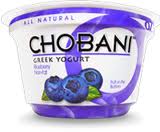PUMPKIN
Fall is here along with cooler temperatures, changing leaves and delicious fall foods!! Some of my favorite foods this season include apples, squash, sweet potatoes, and cranberries all of which are full of antioxidants, vitamins and minerals. But, I have to say my favorite fall food is pumpkin, not only is it one of the most nutritious fruits available but one of the most versatile.
As for nutrition, pumpkin flesh is rich in antioxidants, vitamins and minerals and is also low in calories, one ½ cup serving contains only 50 calories. Pumpkin flesh gets its vibrant orange color from alpha and beta carotene, which are both forms of Vitamin A. Alpha-carotene helps improve vision and immune function, while beta-carotene can help reverse skin damage and acts as an anti-inflammatory agent. Vitamin C in pumpkin helps boost immunity, decrease blood pressure and regulate cholesterol. Other vitamins and minerals in pumpkin include Vitamin E, potassium, magnesium and pantothenic acid.
Pumpkin seeds also contain essential vitamins and minerals like Vitamin E, iron, magnesium, potassium, and zinc. They are also an excellent plant-based source of omega-3 and omega-6 fatty acids, which are heart healthy fats.
Canned pumpkin is available year round while fresh pumpkin is only available September through November. Both varieties are equally delicious, nutritious and versatile!
USING FRESH AND CANNED PUMPKIN:
- Add to pies, cakes, breads( muffins, waffles, pancakes), cookies, soups, stews, ravioli
- Add pureed pumpkin to plain yogurt with cinnamon or to oatmeal with cinnamon and walnuts.
- Mash pumpkin with cauliflower as a substitute for mashed potatoes.
- Serve roasted pumpkin as a simple side dish instead of sweet potato.
- Toss roasted pumpkin pieces into any salad.
- Eat pumpkin seeds as a snack or add to a salad.
Try this recipe using fresh pumpkin in a soup...
Creamy Pumpkin Soup
Ingredients
1, 3 pound sugar pumpkin - peeled,seeded, and cut into 1-inch peices
5 Tablespoons olive oil
4 leeks (white and light green parts only)- chopped
4 to 6 cups low sodium chicken broth
Salt and pepper
Sour cream, croutons, and paprika, for serving
Directions
 1. Heat oven to 400 degrees F. On a rimmed baking sheet, toss pumpki with 3 tablespoons of the oil, 1/2 teaspoon salt, and 1/4 teaspoon of pepper. Roast, tossing once, until tender, 20 to 25 minutes.
1. Heat oven to 400 degrees F. On a rimmed baking sheet, toss pumpki with 3 tablespoons of the oil, 1/2 teaspoon salt, and 1/4 teaspoon of pepper. Roast, tossing once, until tender, 20 to 25 minutes.
2. Meanwhile, heat the remaining 2 tablespoons of oil in a large saucepan over medium-high heat. Add the leeks and cook, stirring frequently, until tender, 4 to 6 minutes. Add the roasted pumpkin, 4 cups of broth and bring to a boil, reduce heat and simmer for 5 minutes
 3. In a blender, working in batches, puree the soup until smooth,adjusting the consistencywith the remaining broth as necessary. Top the soup with the sour cream and croutons and sprinkle with paprika, if desired.
3. In a blender, working in batches, puree the soup until smooth,adjusting the consistencywith the remaining broth as necessary. Top the soup with the sour cream and croutons and sprinkle with paprika, if desired.
Creamy Pumpkin Soup
Ingredients
1, 3 pound sugar pumpkin - peeled,seeded, and cut into 1-inch peices
5 Tablespoons olive oil
4 leeks (white and light green parts only)- chopped
4 to 6 cups low sodium chicken broth
Salt and pepper
Sour cream, croutons, and paprika, for serving
Directions
 1. Heat oven to 400 degrees F. On a rimmed baking sheet, toss pumpki with 3 tablespoons of the oil, 1/2 teaspoon salt, and 1/4 teaspoon of pepper. Roast, tossing once, until tender, 20 to 25 minutes.
1. Heat oven to 400 degrees F. On a rimmed baking sheet, toss pumpki with 3 tablespoons of the oil, 1/2 teaspoon salt, and 1/4 teaspoon of pepper. Roast, tossing once, until tender, 20 to 25 minutes.2. Meanwhile, heat the remaining 2 tablespoons of oil in a large saucepan over medium-high heat. Add the leeks and cook, stirring frequently, until tender, 4 to 6 minutes. Add the roasted pumpkin, 4 cups of broth and bring to a boil, reduce heat and simmer for 5 minutes
 3. In a blender, working in batches, puree the soup until smooth,adjusting the consistencywith the remaining broth as necessary. Top the soup with the sour cream and croutons and sprinkle with paprika, if desired.
3. In a blender, working in batches, puree the soup until smooth,adjusting the consistencywith the remaining broth as necessary. Top the soup with the sour cream and croutons and sprinkle with paprika, if desired.Enjoy, my roomates and I did!!



